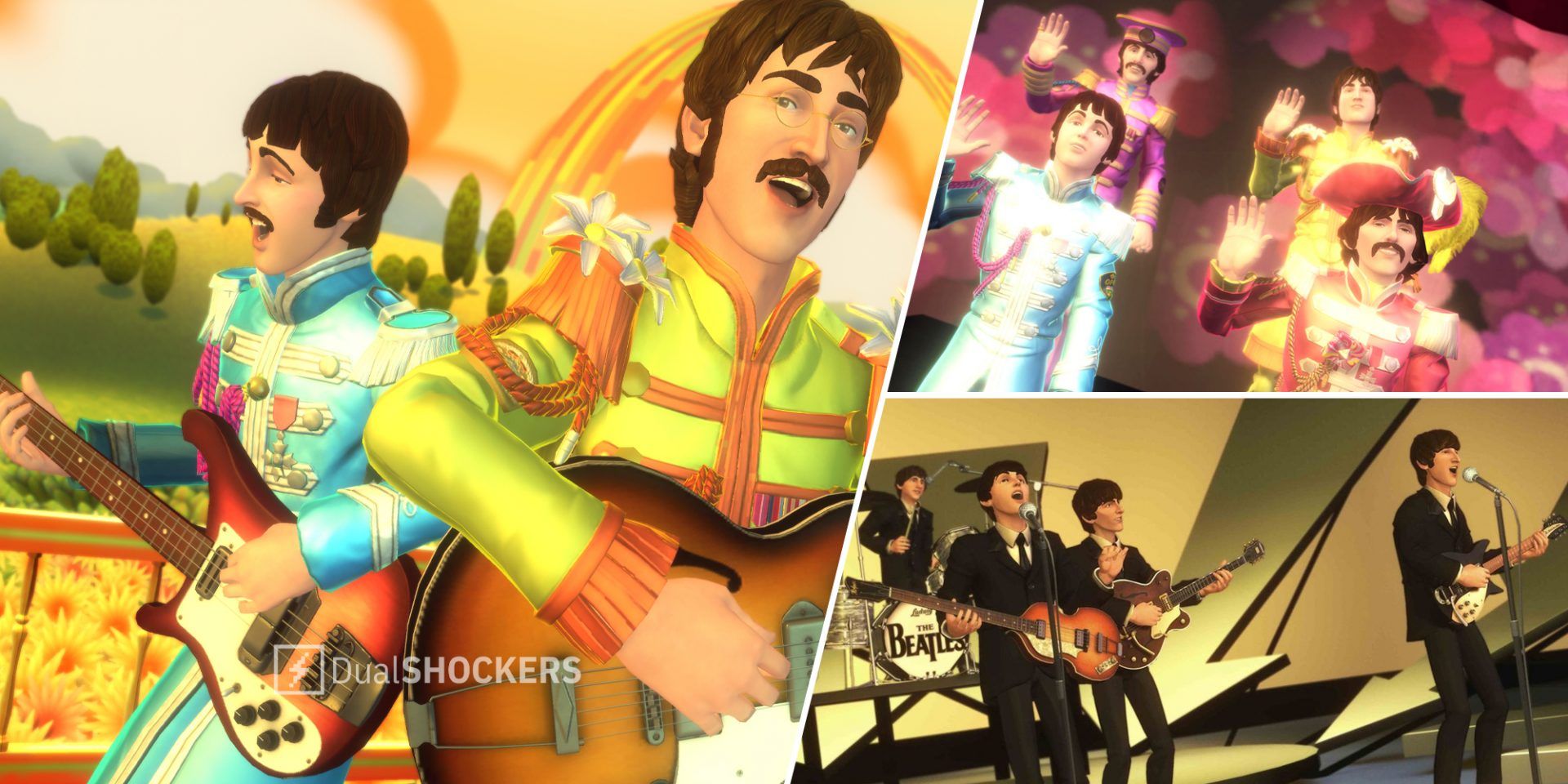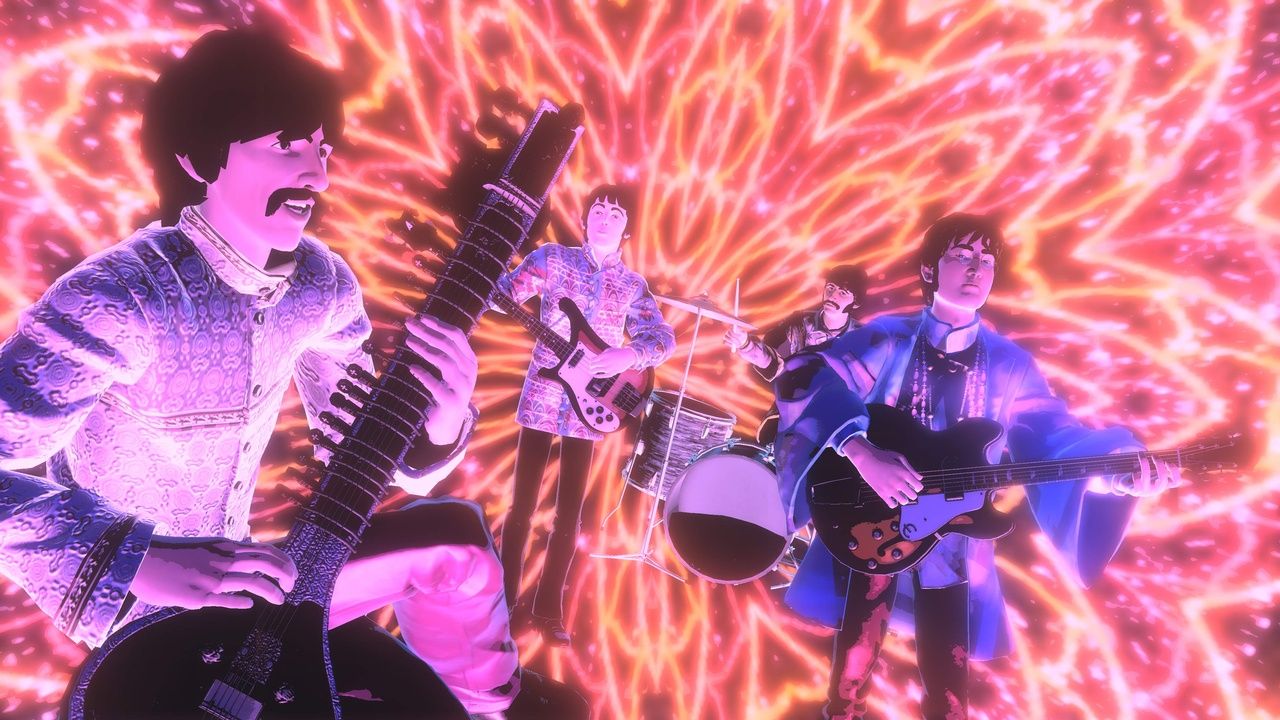The existence of The Beatles: Rock Band is something of a sliding doors story in video games. Following the split between Harmonix and RedOctane, which resulted in Activision purchased RedOctane and the Guitar Hero IP, while MTV purchased Harmonix to develop a new music game, Dhani Harrison had a chance encounter with then MTV president Van Toffler in 2006.
Dhani, son of Beatle George Harrison, suggested that MTV's new rhythm game feature multiple instruments, not realizing that exact concept was already in development leading up to the release of the first Rock Band game the following year. Harrison’s further conversations with Harmonix president Alex Rigopulos helped cement the idea, and after showing an early proof-of-concept using pre-existing Rock Band assets with the Beatles music, they were given the all clear to move ahead with development. With one of the most famous band names behind it, the game's legacy in regard to other band-based rhythm game titles had a substantial leg up.
Other Band Titles had been released in the timeframe when Beatles: Rock Band was being developed, but games like Guitar Hero Aerosmith and Metallica felt very cut-and-dry without much thought put into them. In addition to the time and care put into the game, MTV and Viacom spared no expense marketing the title. Both Paul McCartney and Ringo Starr appeared at E3 in 2009 to show off the game, and a masterful ad using body doubles and archival footage of the band in Abbey Road led up to the games release.
But despite having seemingly everything in its favor, the 2008 recession and the general fatigue setting in for the genre around this time was too much, and Beatles: Rock Band failed to meet expectations.
The game itself is treated very differently from other plastic instrument music games of the era. For example, when Guitar Hero: Aerosmith and Guitar Hero: Van Halen released, both games featured songs from other bands as well. Beatles: Rock Band, however, only featured Beatles music. The game omitted some of the Rock Band series staples that would have been out of place, such as the big finish system that involves spamming notes at the end of a song to rack up points.
The game innovated the Multiple Harmony system, allowing players with multiple microphones to alternate between different pitches of a song at the same time. In addition to the game’s distinct cartoonish art style, the game’s stages replicate famous Beatles locations such as the Ed Sullivan Show and Shea Stadium, but also fictitious ‘dreamscape’ stages. Dreamscape stages are like an artist's rendering of what a song portrays, such as a hot air balloon in ‘Sgt. Pepper’s Lonely Hearts Club Band’ or underwater sections in both ‘Yellow Submarine’ and ‘Octopus’ Garden’. These sections would usually open with the Beatles recording the song in their Abbey Road studio, then transition into the fantastical dreamscape section, transporting you into a psychedelic embodiment of the music. Fun fact: Paul McCartney still uses the dreamscape sections from the games in his concerts to this day.
Beatles: Rock Band Dreamscape
The game’s soundtrack finds a terrific balance between era and variety of the band's catalog. The DLC released for the game in the months following release corrected some of the bigger omissions such as the remaining songs on both ‘Rubber Soul’ and ‘Abbey Road’.
Unfortunately, the game doesn't feature the entire Beatles library, as the disappointing sales limited how much time could be spent adding content to the game, and the licensing costs subsequently proved a little too steep. DLC for the game was taken down in 2016, meaning if you had not already paid for the songs available, there was no way to purchase them in the future. Short of piracy, there is no way to legally re-experience these tracks through the game.
Beatles: Rock Band is as much a love letter as any game in history. The series' tight gameplay is on full display, and the Beatles library is treated with the utmost respect using the game's breathtaking visual stylings. The care put into the title by both Harmonix and the people involved such as Dhani Harrison and Paul McCartney came together to capture one last lightning-in-a-bottle moment for the genre, and produced what could well be the greatest rhythm game ever made.


